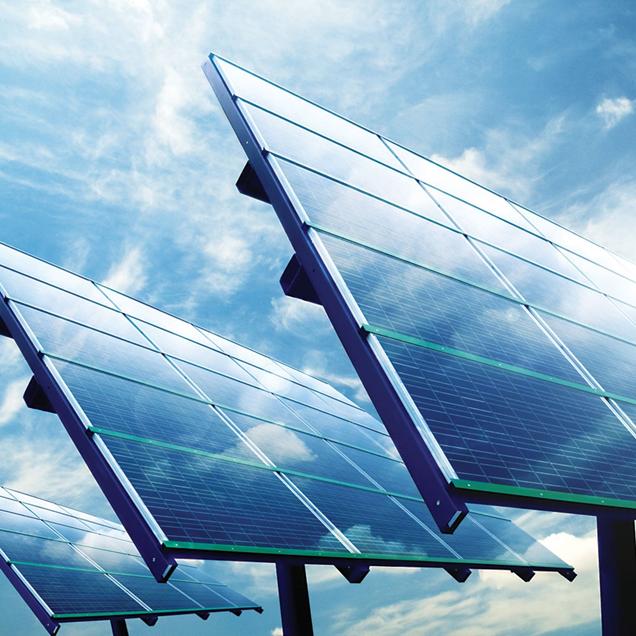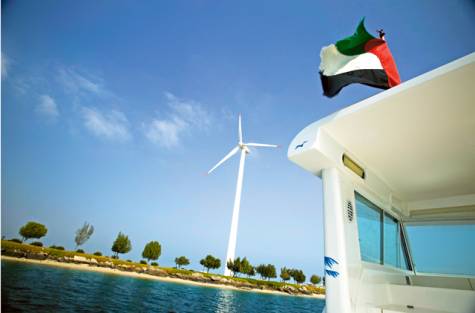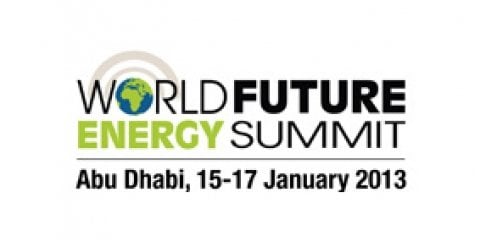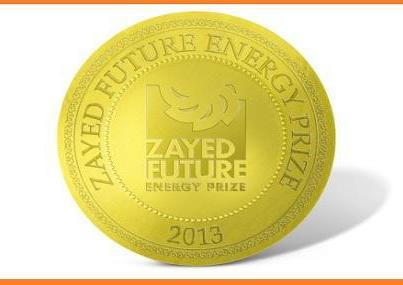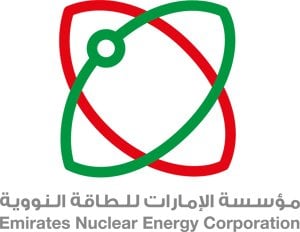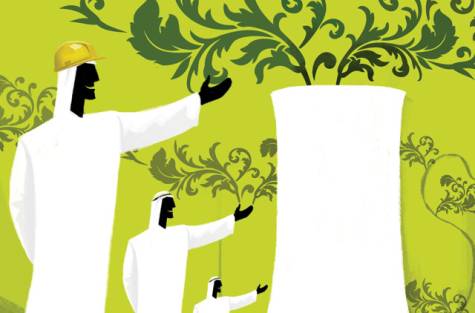Mehmood-Ul-Hassan Khan
“Exponential population growth and increased demand for energy is placing a strain on our natural resources.” Renewable energy will help improve energy security and offer economic development opportunities.
Dr Sultan Ahmed Al Jaber, CEO of Masdar
Black gold is depleting. Natural gas is on the decrease. Available energy resources are being consumed on rapid pace. Old resources of energy are decreasing and reaching at critical stage and giving way to new mix of energy. New technologies are being introduced to make it fruitful and effective.
Energy is full of life and color which gears the pace of development too. It guarantees the survival of humanity on this planet. It protects the long awaited dreams of socio-economic prosperity. It promotes stability and sustainability in the country. It provides essential inputs of industrial productivity, generation of employment, reduction of poverty and above all promotes qualitative life and renewable/alternative energy is a value-addition.
Due to emerging deteriorating law and order situation, conflicting geo-politics realties and the last but not the least complicated geo-strategic scenarios in many crucial parts of the world especially in Middle East the energy dynamics are rapidly on the change. Moreover, energy security has become important issue in the new energy landscape. Economics of comparative advantage and cost-benefit ratios all speak about the utilization of future energy mix compromising of renewable/alternative resources.
Continued upward trends in the prices of oil and gas commodities, depletion of strategic reservoirs of energy in many countries and low investments in the exploration of new energy fields, all are supposed to be responsible for the current energy uncertainties in the world markets. Moreover, weak economies, high debts, sky-rocketing inflation and above all dim prospects of global economy revival are producing serious dints in the conventional energy’s budgets and policies of the countries around the world. Paradigm shift has already been made its roots and succeeded to change the strategic landscape of conventional energy resources and supplies around the globe especially in the Gulf Cooperation Council (GCC) and particularly in the United Arab Emirate (UAE).
Looming threat of climate change and cost-effect analysis of the renewable/alternative energy resources has forced all the stakeholders/countries to initiate sincere and concrete coordinated efforts to institutionalization of green energy policies and projects at large. Now from Greek to Great Britain, Poland to Pakistan and UAE to Saudi Arabia all are diverting their financial resources in the development of renewable/alternative green energies.
United Arab Emirates being the second largest economy of the region having leading status in knowledge-based economy and infrastructure is now leading the region in the pursuits of future energies and technologies.
Nature is kind to all the GCC countries including UAE and “Sun” is ready to help them all in this regard. They all have political will, vision and enough funds to pursue the renewable/alternative energy resources for further strengthening of their respective national macro-economies.
All the GCC countries, prominently UAE have comprehensive renewable/alternative energy policies, regulations and future plans to lit-up their cities, towns and villages. Mega projects are being carried out and Masdar City is the prime example of UAE strong commitment towards the institutionalization of renewable/alternative energy resources.
Green stands for prosperity, progression, productivity and protection because we all need interpreted inflows of save energy for our survival, development and industrial production.
UNITED ARAB EMIRATES’S DRIVE FOR FUTURE ENERGIES
There is no shortage of natural resources in the UAE which holds the world’s sixth-largest oil reserves and has the fifth-largest national gas reserve. UAE has been supplying energy, and has contributed to the growth of the global economy for over five decades. Currently, the UAE has the world’s largest per capita carbon footprint because of power needed for desalination and air conditioning. But now, UAE has become a global hub for future renewable energy and clean technology innovation and development.
In recent years, the UAE is looking beyond hydrocarbons and is investing in new technologies and sources of power to diversify the local and global energy mix. Today, along with barrels of oil, UAE is exporting clean energy. According to official Arab data (October, 2012), the UAE needs to pump nearly $107 billion into energy projects over the next five years, in the Middle Eastand North Africa (MENA). So prospects of renewable/alternative energies are very bright in the UAE.
Economic energy experts estimate renewable energy targets in Abu Dhabi and Dubai alone will account for 2,500 MW of clean energy projects, and these are open to international investment and collaboration too.
The UAE is the first Arab country to launch the green economy initiative. It follows the UAE Vision 2021 and the Arab Green Economy Initiative. The building of the Masdar City, the first green city in the world; the investment in the creation of renewable energy sources, including nuclear energy; and the development of greenhouse and organic agriculture are the few steps already taken by the UAE. The UAE has also become the center of green buildings in the Arab world. The upcoming “The World Future Energy Summit (WFES) 2013” will bring together global leaders in policy, technology and business to discuss the state of the art, develop new ways of thinking and shape the future of renewable energy.
Moreover, according to latest study of Oliver Wyman, a global management consulting, the UAE can reduce its energy costs by up to $3 billion (Dh11 billion) a year by 2030 through implementation of energy efficiency technologies. So, scope and growth chances of energy efficiency technologies are plenty in the UAE.
CEO for Siemens Energy in the Middle East says: “A sustainable energy future depends on a wide range of technologies fitting together perfectly from renewable energies, power highways and smart grids to energy storage devices and efficient solutions for conventional power plants, and energy consumption in buildings, transportation and industry.” He says such technologies are at the core of Siemens’ operations. In 2011, it helped customers around the world lower CO2 emissions by 317 million metric tonnes equivalent to the annual emissions of Tokyo, Hong Kong, Singapore, Delhi, Istanbul, Berlin, London and New York City.
Energy Diversification
UAE government in its integrated “The Abu Dhabi 2030 Plan” and “The Dubai Integrated 2030 Strategy” has already suggested policies/programs and plans for achieving energy diversification targets in the days to come. Both strategic plans promote solar, wind, and waste-to-energy projects throughout the country. Under the Abu Dhabi 2030 Plan, the capital will be powered by clean technologies and alternative sources of energy, with an initial target of achieving 7 per cent renewable energy generation capacity by 2020. Concurrently, the Dubai Integrated 2030 Strategy targets a 30 per cent reduction in power demand and total energy consumption by 2030. Moreover, 99 per cent of Dubai’s energy production uses gas and one per cent using diesel, the energy strategy 2030 will reduce its dependence on oil and gas. Twelve per cent of its future energy could come from nuclear energy and another 12 per cent will come from coal-fired power plants, 71 per cent will come from gas and 5 per cent from renewable energy. Moreover, according to International Energy Agency (2011), the UAE will increase its renewable energy up to 7 percent by the year 2020.
The UAE Foreign Minister, Shaikh Abdullah bin Zayed Al Nahyan stated that the UAE will be a world leader in renewable energy. The UAE has signed a memorandum of understanding with the Global Green Growth Institute (GGGI), for further strengthening of its pursuits of renewables. The goal is to increase the growth of renewable energy on a daily basis.
Undoubtedly, the UAE is leading the GCC and Middle East and North Africa (MENA), in the development of future renewable energy. Its sincerity levels can be judged through its comprehensive renewable energy policies and diversified initiatives not confined to Masdar City, the world’s first carbon neutral zero waste city, the annual World Future Energy Summit, IRENA’s headquarters, the annual Zayed Award for Future Energy, creation of Department of Energy and Climate Change Affairs and environment-friendly legislations.
As active contributors to the UN’s Sustainable Energy for All initiative, the UAE has made commitments to increase the world’s supply of future renewable energy resources. On a grant basis, UAE is building solar and wind projects in countries like Afghanistan, Tonga, and the Seychelles. And at Rio, UAE launched the $350 million concessional finance fund for additional renewable energy projects in developing countries. UAE through its international investments and partnerships is trying to bring remarkable innovations to world and reshape the energy market.
MAJOR PROJECTS
(1)Masdar City
Masdar City is a solar energy project. It is a key element of the “Abu Dhabi 2030 Plan” and the government of Abu Dhabi’s strategic policy framework. Its projected cost is US$22 billion resulting in savings of US$2 billion in oil over 25 years.
It is rigorously working for the development of solar, wind power and hydrogen fuel and reduction and management of carbon emissions in the UAE. It aims to be the first zero carbon emission and car free city in the world, housing 50,000 inhabitants and 1,500 companies. It integrates the R&D, energy production, and commercialization efforts. The ultra modern city will be completed by 2015. It is claimed that, when complete, it will use 70 per cent less electricity and 60 per cent less water than a conventional city. It was launched in April 2006.
Its Masdar Carbon unit offers comprehensive Carbon Management Solutions and specializes in developing energy efficiency and clean fossil fuel projects that reduce carbon emissions while creating additional value through carbon monetization under international policy.
The four facilities at Phase 1 of Masdar Carbon’s ambitious Carbon Capture Sequestration (CCS) project aim to capture 5 million tonnes of CO2 every year. Masdar’s Shams 1 at Madinat Zayed has a capacity to generate 100 MW of electricity to offset 170,000 tonnes of carbon dioxide annually. Other Masdar projects that are under study and in the planning process include Nour One, a solar PV park in Al Ain, and Sir Bani Yas Island, the Middle East’s largest onshore wind turbine farm.
Masdar City: An International Brand
During 2011-2011, it has achieved many international recognitions including “Champion of the Earth‘, Best Carbon Markets Renewable Energy Project Developers, Middle East 2011’ Awards from the prestigious World Finance magazine and other reputable organizations. Even World Bank endorsed its viability and importance.
Masdar has renewable energy projects and investments in the United Kingdom, United States, Spain, Germany, France, China and in the United Arab Emirates. Most recently, Masdar announced it would also build a solar power plant in Tonga that would save over 47,000 gallons of diesel a year and avoid some 400 tons of carbon emissions. The company is also working in Afghanistan to provide solar power to hundreds of homes in isolated areas.
Internationally, Masdar is a leading investor in renewable energy around the world. The UAE government sponsors the world’s largest wind farm, the London Array, and a breakthrough solar plant in Spain that can provide power even at night. And through a venture capital fund, we’ve also invested over $500 million in cutting-edge start-ups firms, much of that in the US.
It succeeded to expand its overseas exposures in different countries. Details are given bellow as:
Projects Names T ypes of Renewables Countries
London Array offshore Wind (World biggest wind energy project) United Kingdom
Thermal power plants Solar (CSP) Spain
Carbon-Tri-Ocean Ocean Egypt
6-megawatt offshore Wind Seychelles
280 MW of thin-film Solar Eastern Germany
Source: Different Research Journals/UAE Newspapers
Most recently, it has completed its joint venture with Torresol Energy, the world’s first commercial scale plant (CSP) in Spain which will help to reduce carbon emissions by over 30,000 tonnes a year. It will fulfill the requirements of 25,000 homes throughout Spain’s Andalusia. It will produce round 24/7 electrical power from renewable sources of energy i.e. 19.9 megawatt. The technology behind the plant allows solar power to be stored and electricity produced from it even during hours of darkness or poor daylight in winter.
(2)Renewable Micro-Grid Project
The UAE’s Global Green Growth Institute (GGGI) has launched a new public-private partnership project to design 100 percent renewable energy micro-grids in Abu Dhabi. GGGI has joined Masdar Institute (MI) and the Research Institute for Industrial Science and Technology (RIST) in Pohang of South Korea to design a cost-effective micro-grid capable of operating on 100 percent renewable energy. It has unveiled a concept design for an island-based renewable micro-grid. It consists of a control system, energy storage, and a high-efficiency DC distribution system. It is designed to use renewable energy sources such as solar PV, small wind power and biofuel production from waste and algae. The micro-grid system can be linked to local seawater desalination and electric-powered boats for island access.
3)First Rapid Charging Station
Most recently, Masdar has installed the Middle East’s first rapid charging station in collaboration with Mitsubishi Heavy Industries Ltd (MHI), as part of its on-going efforts to promote sustainable transportation and serve as a test bed for cutting edge development in clean and sustainable technology.
It aims to assess how efficiently the rapid charger technology will function in the region’s harsh climatic conditions. The CHAdeMO certified Rapid Charger (EFACEC, EV QC) is a high efficiency DC charger provided by Efacec, a leading manufacturer of AC and DC chargers. The charger will serve as a charging station for the 12 Mitsubishi Motors Electric Vehicles “i-MiEV” (EVs) currently in operation at Masdar City.
Diversified Projects
Masdar, together with Abu Dhabi Water and Electricity Authority (ADWEA), jointly installed photovoltaic (PV) solar rooftop installations on 11 government and private buildings in Abu Dhabi. The 2.3 MW of PV panels on the rooftops will generate 4.025 GWh/year of electricity and save around 3,220 tons of carbon dioxide per year.
(4)Geothermal Energy Facility
Masdar City is also proposing to build the Gulf’s first geothermal energy facility. The US$11 billion project will be partially built by the Icelandic company Reykjavik Geothermal. When complete, the geothermal project will be used to power the city’s 5 MW air conditioning system in the future.
(5)Jet Fuel Crop Plan
Scientists at the Masdar Institute of Science and Technology hope to achieve desired goals of renewable energy targets with the passage of time by setting up a demonstration farm in Abu Dhabi. An agricultural project aimed at producing sustainable jet fuel from plants is a step closer to taking off. It consists of producing the biofuel involves pumping water from the sea into agricultural ponds, where local shrimps and sea-bream are grown. It is a way to produce a commodity to potentially produce energy and fuel sustainably in arid regions using small water inputs.
UAE is also constructing the Middle East’s largest onshore wind turbine farm with a capacity to produce 30MGWs on one of the most beautiful natural reserves situated on Sir Bani Yas Island on the west coast of Abu Dhabi which aims to preserve the eco-friendly environment of the Island.
(6)Shams- 1
Shams-1 is the first full scale renewable energy plant in the Abu Dhabi and largest CSP plant in the world. It will generate 100 MW covering an area of 2.5 km², with plans to increase capacity to 2000 MW in the future. It is estimated to cost US$600 million, and is being developed by Masdar alongside Spain’s Abengoa Solar and France’s Total S.A. It consists of 768 parabolic trough collectors. It will be completed by 2012. According to Masdar claims it would displace approximately 175,000 tonnes of CO² per year, which is the equivalent to the planting of 1.5 million trees in the days to come. The Shams II plant will be completed in mid-2013.
(7)Hydrogen Power Abu Dhabi (HPAD)
It is a 60:40 joint venture between Masdar and BP to construct the world’s first commercial scale hydrogen fuelled power plant, utilising fossil fuel feed stock and CCS. The project will require a total capital investment of about AED 7 billion i.e. US$2 billion. The project will take natural gas from the grid and convert it to hydrogen and CO². The hydrogen power plant will generate approximately 400 MW of low-carbon electricity, and could provide more than 5 per cent of all Abu Dhabi’s current power generation.
(8)Private Sector Solar-Grade Poly-Silicon Plant
A lot of new projects have been carried out in the UAE by its private sector which is taking steps to promote sustainable, cleaner and greener technologies in the country. In this regard, MBM Holdings has recently announced the formation of MBM Solar Holding Inc of worth US$400 million. It will build a solar grade poly-silicon plant in the country. The project will be the first upstream plant and is the largest planned solar plant in the region, anticipated to cover a total area of approximately 250,000 square metres. The planned plant will have a total capacity of 2,500 tons per annum of high quality solar-grade poly-silicon product and is expected to start production in early 2012.
(9)Dubai Solar Power Plant
Dubai launched a Dh12 billion solar project, the Mohammad Bin Rashid Al Maktoum Solar Park. It will have a capacity to generate 1,000 megawatts (MW) of power. It will be completed by 2030. It will provide five per cent of Dubai’s total power needs by 2030, using a range of solar power technologies such as concentrated solar power, stirling dishes, parabolic dishes and photovoltaic cells.
(10)Different Ongoing Projects/Efforts
Other than, these mega renewable energy projects the UAE’s government tried hard to develop a 30 MW wind energy project but wind would not play a key source as it had initially anticipated. Notwithstanding, sincere efforts are still going on in this field. UAE also dig into geothermal energy and drilled two, 2.5 kilometer test wells. The end result was not up to the mark. But the resource could be enough to run heat exchangers to run air conditioning and pipe the cold air throughout homes and offices in a district-wide network.
Diversification of Energy Mix
More than big and small 17 projects of the better conserve energy and drive sustainable development are being carried out throughout the UAE. It includes the Department of Municipal Affairs (DMA) and the three regional municipal administrations: Abu Dhabi Municipality, Al Ain Municipality, and Western Region Municipality projects of the renewable energy which also showed the gradual lessen reliance of the UAE on more traditional forms of energy. Moreover, adoption of the International Energy Code, use of LED technology, anti-plastic bag legislation and massive plantation are the few prominent features of the UAE government towards the further development of renewables by increasing public awareness.
(11)Nuclear Energy
Nuclear power is one of the most sustainable forms of energy available on the planet and the UAE is preparing for the future by investing in an atomic plant. The UAE is pursuing a peaceful, civilian nuclear energy programme. It upholds the highest standards of safety, security, nonproliferation and operational transparency. Government officials, nonproliferation advocates, and energy experts worldwide have called the UAE approach a gold standard for countries interested in exploring nuclear energy for the first time. Abu Dhabi is building four reactors in cooperation with a review board headed by Hans Blix. The project has full transparency, including waste disposal and protection against threats such as plane crashes. The UAE’s ambitious plans to begin producing nuclear power by 2017 would make it the first Arab country to do so. Following the Fukushima nuclear incident in Japan, the UAE has taken further precautionary measures to avoid mistakes made in the Japanese plant.
International Institute for Strategic Studies research report (2009) said the UAE has very valid energy reasons for wanting nuclear power: Continued booming economic growth and ever increasing and further energy diversification are the few important reasons of it.
Growing energy needs forced the UAE to develop a nuclear power program. Domestic hydrocarbons will be unable to satisfy the UAE’s growing demand for electricity the UAE already imports 60% of the natural gas it uses for electricity production. To maintain present levels of growth, UAE will need to generate at least 40,000 Megawatts of electricity by 2020.
The energy policy of the UAE projects electricity demand escalating from 15.5 GWe in 2008 to over 40 GWe in 2020, with natural gas supplies only able to meet half of it. It is estimated that diversifying energy base into new sources like nuclear UAE would be able to export as much hydrocarbon as possible and build up a huge foreign exchange reserve. It is supposed to be a major driving force for the UAE to the pursue nuclear power route.
UAE has already established a Nuclear Energy Program Implementation Organization as recommended by the IAEA.” It will operate under a civilian set-up. The UAE has drafted a comprehensive national nuclear law which establishes a fully independent nuclear regulatory authority. UAE is also offering joint ventures to many renowned to foreign investors for the construction and operation of future nuclear power plants which verifies it strong commitment for non-proliferation and peaceful usages of nuclear energy in the days to come.
(12)Other Possible Future Energy Resources
The renewable resource that is available in the UAE besides solar and wind is geothermal energy, which originates from the earth’s core. Additionally, biomass, organic materials, plants or agricultural wastes that can be used as fuels are significant sources of renewable energy. These could play a major role in partially meeting the UAE’s energy needs. Wave energy that is extracted from deep-sea water waves, as well as tidal energy which occurs as a result of gravitational and kinematic forces due to motions of the earth, the moon and the sun, are also considered valuable renewable resources. However, the potential of harnessing such renewable energy is almost insignificant in the UAE.
Ocean thermal energy conversion (OTEC) is a renewable energy form where a heat conversion process takes place between the ocean surface that is exposed to the sun and the cold temperatures of the ocean depth. This type of renewable energy could be more economically viable in areas surrounding deep seas and oceans as well as tropical regions.
International Energy Companies Participation
Siemens hopes to help the region and especially the UAE to realise its sustainability plans. While Siemens is establishing its Middle East headquarters at Masdar City, GE is building its first Ecomagination Centre, and Schneider Electric will operate a Living Laboratory innovation centre. Switzerland’s École Polythenique Fédérale de Lausanne is working with local and international bodies to launch a clean technology cluster in Ras Al Khaimah. The Masdar Institute, developed with MIT, continues to act as an incubator for advanced alternative energy and environmental technologies.
Expected Benefits of Future Renewable Energy
It is predicted that alternative/renewable energy would have multiplier effects on humanity, society, business, economy, nature, and politics in the years to come.
(a) Reduction of carbon emission
(b) Increase in agro-productivity
(c) Easy and smooth means of energy
(d) Decrease in cost of production
(e) Effective control on deteriorating levels of climate change
(f) Diversification of economy
(g) Generation of employment and creation of millions of new job.
(h) Transformation of labour based economy to a knowledge based economy.
Suggestions
The need for developing a global partnership on renewable energy, particularly solar and wind resources involving public and private sectors, to ensure availability of affordable energy to the common man is immense. UAE has demonstrated to the world that trade and commerce, innovation and invention, ideas and enterprise could make a desert bloom. It is now heavily investing in the fields of renewable energy mix particularly in solar energy.
The deteriorating global warming levels and drastic changes in the climates have compelled us to find new sustainable, renewable energy resources to power the planet without further damages to environment equilibrium. The exemplary role of the UAE is highly appreciated. Solar as well as the other renewable energy mix are key opportunities for energy diversification in the region, with UAE taking a regional leading role in these sectors.
(a) Governments must develop a well-designed, long term and consistent price support mechanism, which is able to adapt predictably over time to changes in technology and costs.
(b) Strong political will is urgently needed to bring changes and achieving desired goals of renewable energy resources and reducing levels of emissions.
(c) Urgent need for greater government involvement in moving things forward on renewable energy resources around the globe.
(d) More incentives for the private sectors to make huge investments in the renewable energy resources.
(e) Regional cooperation and collaboration must be promoted
(f) Organisations, institutions and all members of community projects to shift towards renewable energy technologies and clean energy solutions in order to further the use of these solutions and innovations to ensure the preservations of environment and contribute to reducing the impact on climate change
(g) More emphasize must be given to importance of nurturing the national talent and growing national capabilities in the development and implementation of renewable energy technologies in the UAE.
Note: The series of articles are written on the eve of upcoming 41th National Day of UAE 2012.
